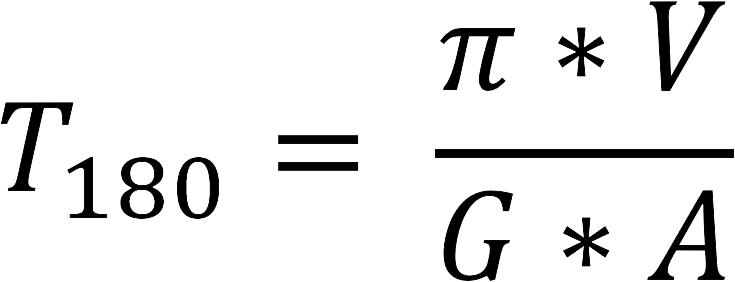Aerodynamic Turn Radius EquationCreated June 2011
|
Aerodynamic Turn Radius EquationCreated June 2011
|
This rather simple equation from Subsonic and Supersonic Anti-Ship Missiles: An Effectiveness and Utility Comparison (Jan. 1997 Naval Engineers Journal) works quite well and is accurate to within about ten feet when compared to a more complex formula/calculator (HERE).
The formula is:
Where:
R: Turn Radius (feet or meters) V: Air Vehicle Velocity (ft/sec or m/sec) A: Turning Acceleration Capability of Air Vehicle (ft/s2 or m/s2)
A can be calculated through the simple formula:
Where:
GF: How many G's the Air Vehicle is Pulling. G0: Standard Acceleration of Gravity (32.17405 ft/s2 or 9.80665 m/s2)
You can also estimate the amount of time it takes to perform various turns via the following equations:



Where:
T90: Turn Time (Seconds) for 90 degree turn T180: Turn Time (Seconds) for 180 degree turn T360: Turn Time (Seconds) for 360 degree turn V: Air Vehicle Velocity (ft/sec or m/sec) A: Turning Acceleration Capability of Air Vehicle (ft/s2 or m/s2)
To make things easier, a pre-built calculator has been created for your convenience.
Pre-Built CalculatorSpeed Examples: 100 MPH - WWI Biplanes 400 MPH - WWII MonoplanesG Loading (G's) G-Loading Examples: 2 to 3 G - WWI German Fighter Rear Wing Spar Limit Calculations:
|